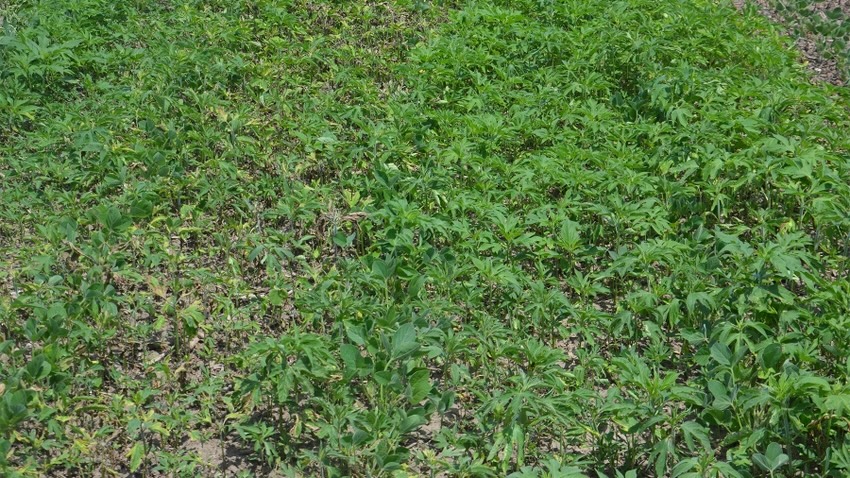How to manage giant ragweed, waterhemp escapes

Waterhemp and giant ragweed are just peeking out of the canopy. I knew there were a few escapes, but there are more weeds than I thought. Can I still spray them, or would it just be revenge spraying now? If so, what can I use? Will I hurt yield? The beans are non-GMO.
The Indiana certified crops adviser panel answering this question includes Danny Greene, Greene Crop Consulting, Franklin; Abby Horlacher, Nickel Plate Consulting, Frankfort; and Brian Mitchem, Farmer 1st Agronomy Consulting Services, Decatur.
Greene: Your two main objectives with weed control are to limit the negative effect on this year’s crop and to limit negative effects on future crops from the weeds and the control strategies you choose.
Waterhemp’s competitive advantage includes the number of seeds produced per plant as well as the ability for seeds to germinate throughout the spring and summer months. Each waterhemp escape can produce thousands of small seeds.
Plants starting in soybeans this year may not impact the current crop’s yield very much, but they could create competition as an army of plants you need to fight when you rotate back to soybeans. Giant ragweed will likely be a more competitive weed with soybeans than waterhemp this season.
It’s best to start clean and keep weed pressure low using a preemergence herbicide program. When you find waterhemp or giant ragweed escapes, the more popular control options include the Group 14 herbicides, like Flexstar and Cobra. Some are labeled to be used up to 45 days preharvest. However, be aware of herbicide-crop rotation restriction periods, which can be 10 months back to corn. Always read and follow the label.
Horlacher: You can spray them, but quite a bit of the damage has already been done with weed seed production. Harvest can be more difficult when you have thick weed stems throughout the field. It can be beneficial to spray and kill off the weeds present to ease harvestability. Talk to your local chemical representative about what they have on hand to kill late-season weeds.
Mitchem: In non-GMO soybeans, there are few effective options for mid- and late-season waterhemp and giant ragweed. Even if they were a GMO variety, we do not have labeled options at our disposal. The only control option is hand-weeding.
Both weeds mentioned are competitive and will impact yield, depending on the severity. Consider placing non-GMO soybeans in fields with low giant ragweed pressure going forward, as we have very few soil residual herbicides that are effective for giant ragweed available for soybeans. Waterhemp can be managed with soil-applied residuals and in-crop herbicide layers.

